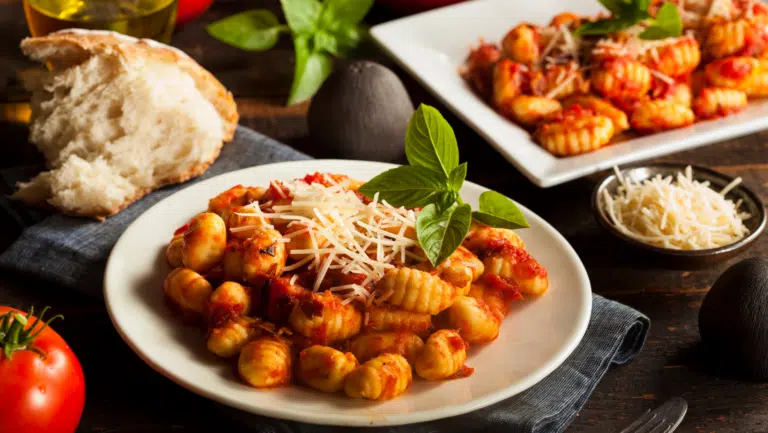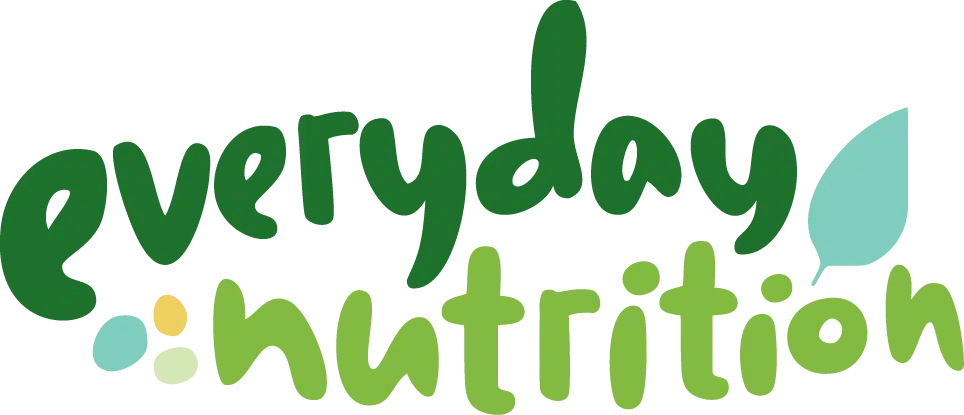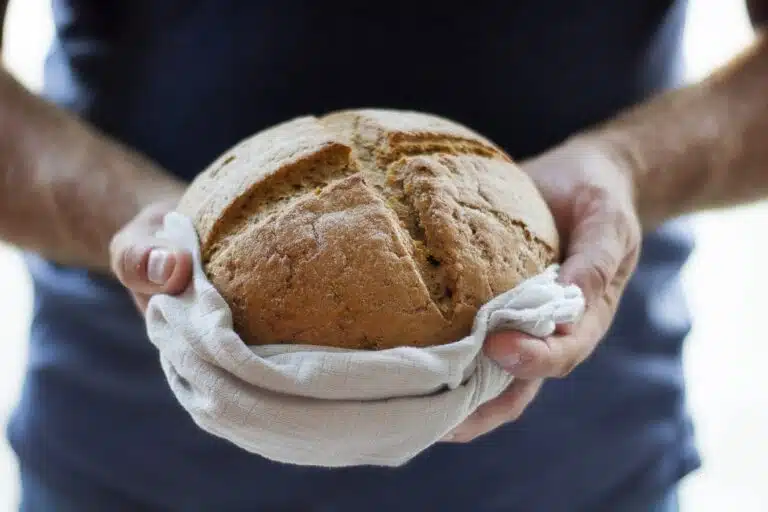
10 Low FODMAP Foods you Didn’t Know you Could Eat
10 Low FODMAP Foods you Didn’t Know you Could Eat
- filed under: All, FODMAPs & Food Intolerance
This week I have a guest blog from the lovely Nutrition and Dietetics student Caitlin Kemp.
Are you confused about what to eat while following a low FODMAP diet? Do you feel overwhelmed by advice regarding what you can and can’t eat? With much of the focus on identifying which foods to eliminate, the low FODMAP diet seems restrictive and quite honestly, not much fun. Be assured there are many delicious foods you can still enjoy while following a low FODMAP diet – it’s simply a matter of knowing which foods!
Fear not, here’s a list of some of your favourite foods you may be surprised to know are FODMAP friendly.
1. Fruit
You can still enjoy the sweet nutritious goodness of fruit – however some fruits are better tolerated than others. Fruits are often high in the FODMAP sugar fructose (a monosaccharide). However, fruits that do not have excess fructose and contain equal amounts of glucose and fructose can be tolerated. This is because glucose acts as a carrier for fructose, enabling fructose to be absorbed into the bloodstream instead of continuing to the large intestine where it will be fermented by bacteria resulting in gut symptoms. Low fructose fruits include oranges, mandarins, ripe guava, honeydew melon, pineapple, kiwi fruit, passionfruit, firm banana, raspberries and strawberries. Avoid eating large amounts of fruit (even low fructose varieties) as a large total fructose dose may cause IBS symptoms. We recommend sticking to one serve of fruit per meal or snack.
Try this: Raspberry sorbet
2. Cheese
Cheese lovers rejoice, a low FODMAP diet is not necessarily a dairy free diet! The milk sugar called lactose (a disaccharide and FODMAP sugar) is found in most dairy foods, but is highest in milk. Some cheeses are actually very low in lactose, because during the cheese making process the watery portion of the cheese (the whey) is strained out along with most of the lactose. Low lactose cheeses that are suitable for the low FODMAP diet include cheddar, colby, feta, mozzarella, Swiss and tasty cheese.
Try this: Cheesy scrambled eggs
3. Oats
Just because you have eliminated wheat from your diet doesn’t mean you can’t eat other grains. Rolled oats are low in FODMAPs at ½ a cup serve and a suitable food option. Try cooking with lactose-free milk to make porridge. Craving a drizzle of honey on your morning bowl of porridge? Use low FODMAP alternative maple syrup instead.
Try this: Rolled oat muesli
4. Rice
Rice is another gluten-free grain that is acceptable to eat on a low FODMAP diet. For a more nutritious option, try brown rice as it still contains its outer husk layer so has more fibre than white rice.
Try this: Chicken stir-fry with brown rice and green beans
5. Greek yoghurt
As discussed earlier, avoiding FODMAP lactose does not necessarily mean saying goodbye to dairy altogether. Regular yoghurt usually contains some lactose, however full-fat Greek yoghurt with no added sugar is low in lactose. This is because of the traditional straining process removes the watery whey and most of the lactose. This is what makes Greek yoghurt so thick and creamy, and also a low FODMAP option!
Try this: Blend with frozen blueberries, mint and rolled oats for a breakfast smoothie.
6. Strawberry jam
As long as the jam hasn’t been sweetened with high fructose corn syrup (which is excess fructose overload!), or has added fruit juice then strawberry jam is a suitable low FODMAP spread. Strawberries are a low fructose fruit, which make them low FODMAP.
Try this: Strawberry jam on low FODMAP toast
7. Beer and wine
You can still enjoy an occasional drink while following a low FODMAP diet. While beer is made from grains like wheat and barley (which are high FODMAP), most of the FODMAPs are lost during the processing and therefore can be tolerated on a low FODMAP diet. Wine is made from grapes (a low FODMAP fruit) so is also a suitable alcohol choice. Just be careful of sticky dessert wines which often contain excess fructose.
Try this: It should be noted that alcohol can aggravate IBS symptoms, so intake should be limited to one glass of wine or one can/bottle of beer.
8. Chickpeas
This one may surprise you. Chickpeas are generally a high FODMAP food due to their galacto-oligosaccharide (GOS) content. However, if you eat ¼ cup or less of canned chickpeas that have been rinsed and drained, they are actually low FODMAP. This is because FODMAPs are water-soluble and leach out of the chickpeas into the brine of the can. When you rinse and drain the chickpeas, the FODMAPs are washed away. This brings up an important point that some high FODMAP foods can actually be low FODMAP if eaten in small quantities, or prepared in a particular way (more on this in another blog post!)
Try this: Mix ¼ cup canned, drained and rinsed chickpeas into a salad with lettuce, tomato, cucumber and chicken slices.
9. Dark chocolate
Milk and white chocolate contain moderate amounts of lactose due to their milk content (this is usually listed as milk powder or milk solids in the ingredients). This means these chocolate varieties are not recommended during the elimination phase. On the other hand, quality dark chocolate should contain no milk and therefore is a suitable low FODMAP treat alterative.
Try this: 30g (about 5 squares of dark chocolate) is a low FODMAP serve
10. Sugar (sucrose)
Fructose and lactose are both FODMAP sugars, however there is another sugar which is not considered a FODMAP. This sugar is called sucrose and is also known as table sugar, white sugar, brown sugar or caster sugar. Sucrose is a double-sugar (disaccharide) made up of one glucose and one fructose molecule in a 1:1 ratio. It does not have excess fructose and this means it can be tolerated on a low FODMAP diet. Sucrose can be found naturally in some fruits and vegetables and is often added to baking. While sucrose can be tolerated on a low FODMAP diet, it’s important to check that sucrose-containing foods do not also contain other FODMAPs.
Try this: white sugar in your tea or coffee
Food doesn’t have to be bland when eliminating FODMAPs. Rather than focusing on what you can’t eat, focus on what you can eat. It’s also important to note that the elimination phase of the low FODMAP is not a lifelong diet. Some of the foods you are currently restricting in the elimination phase may actually be tolerated during the reintroduction phase. It’s just a matter of experimentation and patience. An Accredited Practising Dietitian will be able to guide you through every step of the way.
About the author:
Caitlin is currently a Nutrition and Dietetics student at Monash University. With a love for food and cooking from a young age combined with an interest in health and science, Caitlin is passionate about becoming a dietitian and helping others to improve their diets and lead a healthy lifestyle. When she is not studying, eating or cooking, Caitlin loves reading, keeping fit and planning her next travel adventure.
TAGS:
SHARE THIS POST

Meet Joanna
PASSIONATE IN DIGESTIVE HEALTH
grab your freebie
Week 1 - Low FODMAP Menu







26 Comments
Thanks for the information on my ibs cause I got it really bad the Maine thing that helps me have bowl movements is probiotic drinks
Grapes are high in fructose, not low. I have fructose malabsorption and I cannot eat them due to the fructose content being high.
Grapes have been reclassified since this article was published, so thanks for remiding me to edit it. They do have a small low fodmap serve, so they dont need to be completley avoided though.
Honey is high in fructose. So drizzling honey on low FODMAP food defeats the purpose of eating that food.
Hi Anne, lovely to connect with you. Good news is that Monash list honey as low fodmap at 1 tsp, this is enough for a small drizzle on oats without making them high fodmap 😃
I have a wonderful recipe for gluten free bread if anyone is interested.
Hi Theresa,
I’m absolutely interested in your GF bread recipe (if vegan), thanks for offering to share it.
Katie
I would love the recipe.
Hi, can you recommend your recipe for gluten free bread? I would very much like the recipe please. I normally don’t like gluten free as i5 tastes like cardboard but I am quite desperate now as my ibs is worsening.
Yes please, we love to make bread ( in the bread maker ) would love it if you share your recipe to us.
Yes pls!
I am interested…
Im over eating like this hahahahah
Is dextrose considered low Fodmap?
Yep 👍
Yep, dextrose is low fodmap 👍
This is excellent. There is so much misinformation out there. I just read on WebMD that applesauce is great for IBD flare-ups. HA! I’d be in the bathroom all night if I ate some. I used to think citrus must be bad for my stomach because of all the acid. Turns out I can have as much as I want! You really have to read the fine print with this….thank you!
From what I’ve read not all citrus is created equal, oranges ,clementines, mandarins, lemons and limes are ok, but grapefruit is too high in those tricky sugars …pink pomelo has been tested and is ok in a small serving, but where I am I can only ever find white… so I treat it like grapefruit and be Cautious . 😊
I eat applesauce everyday and it doesn’t bother me a bit. It is no sugar added applesauce and I love it. I was on it as part of the BRAT diet my doctor on before finally giving me the diagnosis of IBS and I’ve stuck with it, only now I eat oat toast
This information has been really helpful. My Gastroenterologist diagnosed me with IBS. I am on the FODMAP diet. I’m lactose intolerant. Really working hard with such a strict diet plan. I’m keeping a journal of everything I eat and amount. Should be eating lots of fresh veggies/green leafy ones. Not tolerating the green leafy veggies raw or cooked!
Any suggestions 🤔.
Interesting, sounds like you might be reacting to some low fodmap foods. Have you seen a dietitian to troubleshoot this? We’re happy to see you and get to the bottom of whats going on if that helps?
I’m presently on prednisone for a torn shoulder, minimally taking prednisone short term. I’ve been eating and eating, then taking miralax for constipation which really makes me poop too much. Been eating rice cakes with grape jelly, too, which I just learned is high Fodmap. I’m in terrible pain. Better today. Tapering down on the prednisone. Any suggestions how to control the pain? Hoping tomorrow’s better with less prednisone. Didn’t eat but one rice cake today. Help!
Hi Barbara, im sorry to hear about your shoulder. Its hard enough having a sensitive gut without adding an injury and medication to the picture. Maybe its worth checking in with your doctor or dietitian for advice on what to do about the pain. They know you and your situation, so can make suggestions targeted at your needs.
I am in the elimination phase with fodmap now but I have to say I am confused about the list…on one hand, I read no tomatoes at all, then another says only canned tomatoes or fresh Roma ones…other foods also but too many to list…doing this on my own until I see my Doctor. There is improvement so far luckily. Any advise please…
Hi Angela, glad youre seeing an improvement. There are lots on conflicting lists around and many are out of date or just incorrect. Monash FODMAP designed the diet and test the food, so the Monash FODMAP app is the gold standard and the most reliable resource. While many people try on their own, people who work with a dietitian find the whole process easier, less confusing, they get better results and restrict less food as a specialist dietitian is able to adapt things to their specific situation. There is even some indication that working with a dietitian saves money in the long run due to reduced spending on unnecessary products and less need for future healthcare.